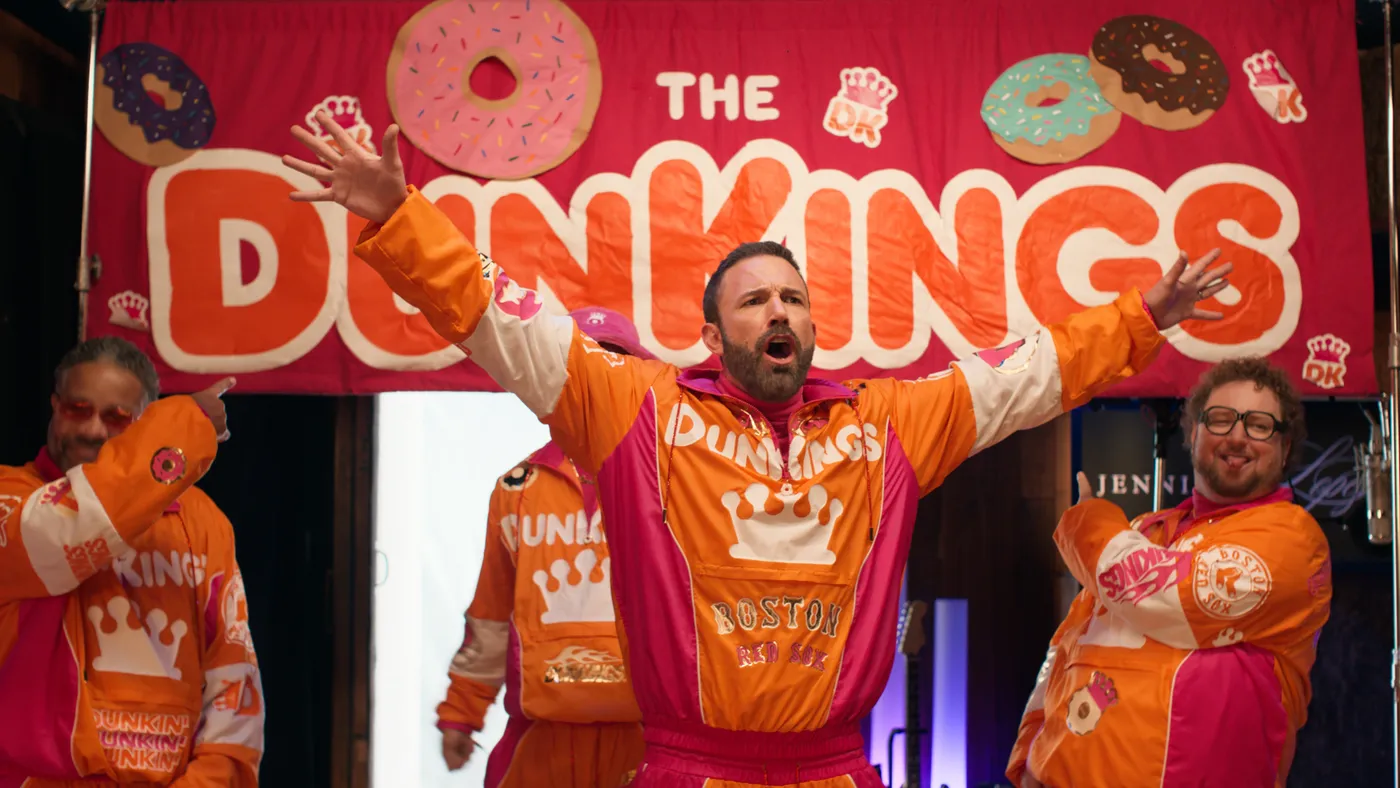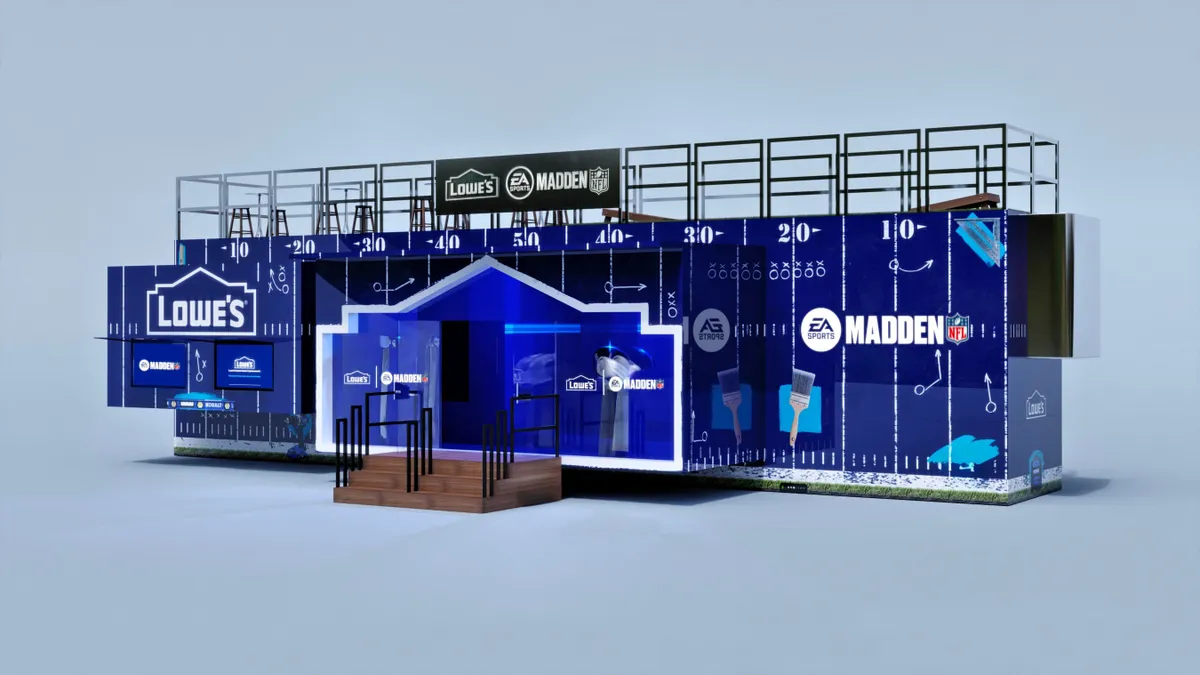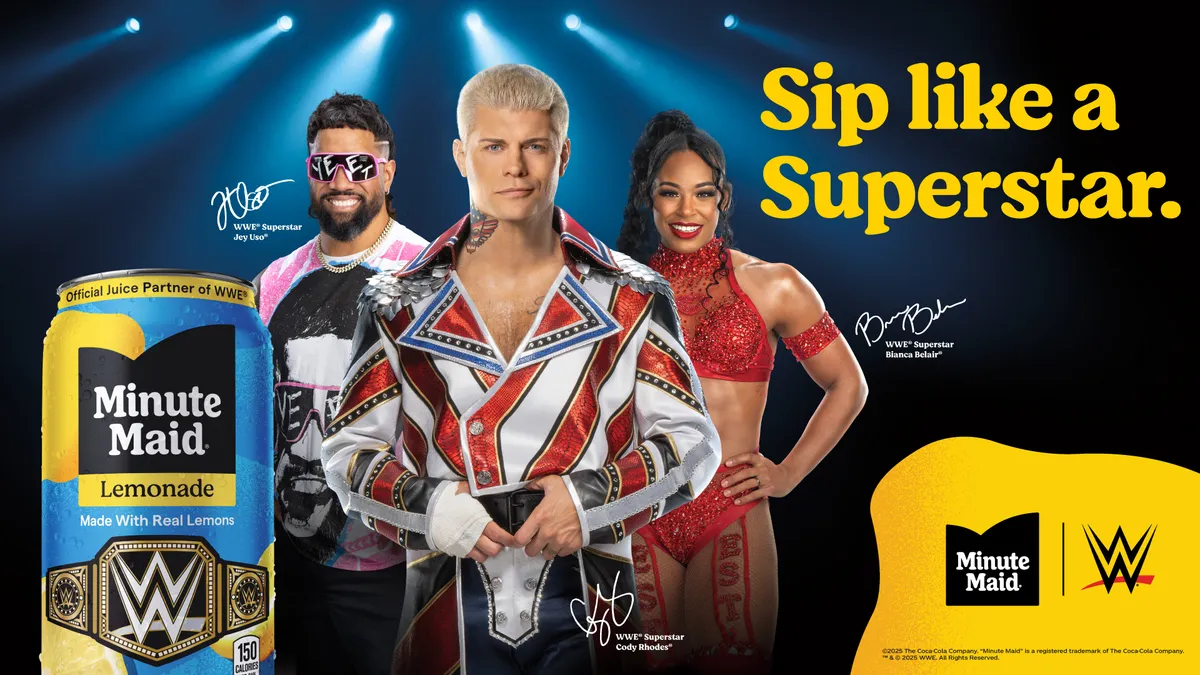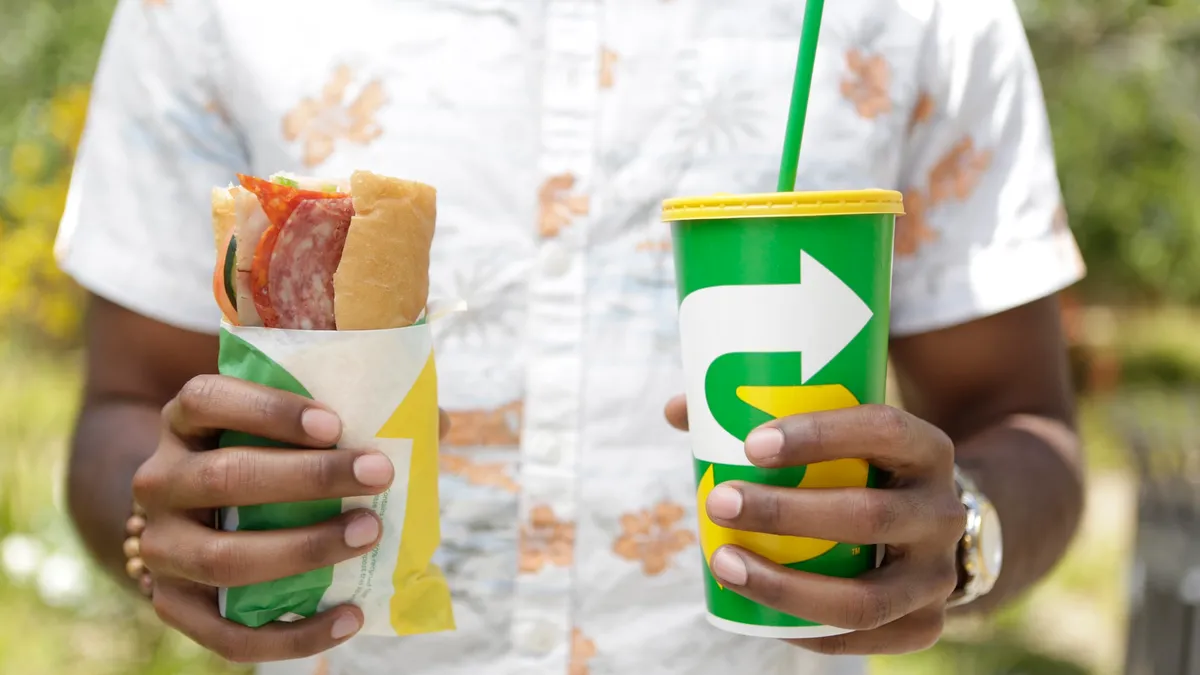Super Bowl LVIII on Sunday delivered another nail-biter on the field but a lot of head-scratchers on the advertising front — hello, Temu and RFK Jr. — with just a handful of clever, albeit conventional, commercials cutting through the clutter.
The Kansas City Chiefs secured a clutch win over the San Francisco 49ers in overtime at Allegiant Stadium in Las Vegas, fortifying their status as the next NFL dynasty. The night also acted as a Hollywood moment for fans who have tracked the relationship between Chiefs tight end Travis Kelce and Taylor Swift, capped off with a victorious kiss, though the excitement mostly stayed focused on the ups and downs of the game itself (with one of Kelce’s blowups achieving meme status).
Marketers seeking a similar moment in the sun relied on tried-and-true tactics, playing it safe in the wake of a year rife with culture wars controversy, though the realities of an election cycle and global strife still uncomfortably crept in. As with last year’s big game, too many companies relied on the mere presence of a celebrity (or celebrities in many cases) to score points, with humor, wit and a connection to the product curiously absent. A deluge of listless cameos ended up benefitting ads that actually had a distinctive angle, such as CeraVe’s winning, weird effort with Michael Cera or State Farm’s campaign playing on Arnold Schwarzenegger’s accent, the leader of the pack for USA Today’s closely watched Ad Meter.
“The Super Bowl this year was the Kitchen Sink Bowl,” said Jason Harris, president and CEO of agency Mekanism, in emailed comments. “Advertisers tried too hard. Instead of one celebrity, they put in 5 or 6. Instead of one clear joke, they aimed for several. It was overly complex and hard to even remember the brand for many of them.”
Innovation, in general, stayed in low gear during the CBS broadcast, with a handful of ads promoting generative artificial intelligence (AI) and QR-code enabled commercials from companies like DoorDash and TurboTax linking linear channels with mobile. An energetic, kid-friendly Nickelodeon simulcast also earned accolades amid an affair that otherwise did not match the glitz and glam of Vegas, barring a show-stopping halftime show from Usher and a raft of musical guests including Alicia Keys.
“The biggest surprise was how little risk was taken,” said Andrew Hunter, executive creative director at Ogilvy, of Super Bowl LVIII’s ads lineup. “I think this will largely be a forgotten year. Some highlights, for sure, but few brands gave us reason to talk outside of this news cycle.”
Celebs with cultural connections cut through
As expected, Super Bowl marketers leaned heavily on celebrities to broaden the appeal and buzz of their ads. But as more and more big game ads feature celebs, forging an authentic connection between ambassador, the brand and culture at-large becomes increasingly critical.
Building on a highlight of last year's Super Bowl, Dunkin' continued its popular series of ads featuring noted brand-obsessive Ben Affleck by loading up on meaningful celebrity cameos. In a spot teased during a culture-referencing ad that aired at this month's Grammy Awards, Affleck's pursuit of pop music stardom alongside wife Jennifer Lopez, best friend Matt Damon and fellow New England icon Tom Brady received raves.
"For spectacle, entertainment and branding, I’d give it to Dunkin for doubling down on Affleck’s Boston connection and nailing the celebrity caricatures," said Ted Wahlberg, senior vice president and group creative director at agency Mower, in emailed comments.
State Farm and BMW both played off of an actor's distinctive accent with good results, with the insurance brand parodying Schwarzenegger's pronunciation of "neighbor" and the automaker nodding to the enduring popularity of a good (or bad) Christopher Walken impression. Both ads also added a kicker with another celebrity tie-in: State Farm reunited Schwarzenegger with his "Twins" co-star Danny DeVito and BMW featured half-time performer Usher.
Brands continue to try to "break the internet" with ads designed for virality, a concept Verizon took literally with an ad that surprisingly featured Beyoncé. The global pop star tried — in vain — to break Verizon's internet with a series of increasingly outsized stunts, from opening a lemonade stand and revealing an android ("Beyonc-AI") to donning Barbie branding and performing in space. When none of those worked, Beyoncé closed the ad by teasing new music in the form of a surprise album announcement and new song release. Verizon's Beyoncé play was a "massive surprise in a Super Bowl full of teases and leaks," according to Scott MacLeod, head of planning for VIA.
"This move wasn't just about promoting Verizon (though it did so brilliantly); it was a masterclass in leveraging the Super Bowl platform for maximum impact, blending product placement with personal brand with a cultural moment in a way that felt both seamless and electrifying," the executive said in emailed comments.
L'Oréal brand CeraVe revealed the finale of its campaign with Michael Cera. After weeks of pseudo-viral photos and podcast appearances, the actor made his pitch to the CeraVe board to be its new spokesperson in a celebrity tie-up that was clever, memorable and in-line with the off-kilter humor of comedy duo Tim and Eric, who directed the ad.
"For me, Michael CeraVe won the game. It did everything a Super Bowl commercial is supposed to do. It was surprising for the category, used star power in a way that only they could, and was tailor made for social before and after the game," said Ogilvy’s Hunter.
But for the few celebrity-fueled wins, there were plenty of losing ads loaded with star power, with Uber Eats, T-Mobile, Homes.com, E.l.f. Cosmetics and Michelob Ultra among the advertisers who used the same playbook but missed the mark.
"The celebrity multiverse opened its portal, unleashing countless related or entirely unrelated characters and A, B, or C-list celebrities," said Kyle Telman, associate creative director for experience at Siegel+Gale. "This … trend presupposes that more notable people in an ad means wider audience traction."
More 'WTF' than 'wow'
Before celebrity was the go-to tactic for Super Bowl ads, weird humor and big creative swings reigned supreme. This year, much of the conversation was around ads that were weird for the wrong reasons, like an animated Temu ad that played several times, looked like gameplay from a marginal mobile game and left viewers stumped about what exactly the e-commerce platform does.
"Despite strategic media placement, it did fall short. There was much more potential for creativity and inspiration. With each repeated airing during the game, I felt it left viewers feeling more frustrated than engaged," said Rob Canales, chief strategy officer at The 3rd Eye, in emailed comments about Temu’s campaign.
In-line with an industry-wide trend, brands attempted to avoid controversy and culture war minefields, with only a few, like Dove, putting purpose at the center of their big game ads. Yet the broadcast was heavy with politics and causes, even as the NFL looks to avoid previous fumbles.
"In spite of the NFL’s seeming anti-political rhetoric that dominated headlines during the Colin Kaepernick kneeling era, there seemed to be quite a few politically charged ads that ran during the Super Bowl," said Joél Leon, creative director at T Brand Studio, in emailed comments.
The Foundation to Combat Antisemitism made its big game debut with a campaign that made a larger point about standing up to all forms of hate, while Pfizer — with its COVID vaccine still in the political crosshairs — toasted to the history of scientific advancement in an ad to the tune of Queen's "Don't Stop Me Now" that culminated in a pitch to fight cancer. Regionally, country stars Lainey Wilson, Jelly Roll and Valerie June made a pitch for healthcare price transparency in a PSA from advocacy group Power to the Patients, while the Church of Scientology asked people of all faiths to learn more about the religion.
In the night's biggest religious statement, Jesus-focused advocacy group He Gets Us returned to the Super Bowl to preach inclusivity, but a pair of ads drew confusion and some ire about a religious group spending money on a Super Bowl ad rather than on helping people.
"I thought I was the only one thrown off, but once the first [He Gets Us ad] ended, someone at the Super Bowl party said 'what did I just watch?'," said Jason Wolske, executive creative director at David Miami, in emailed comments.
The most political ad was also one of the night's worst received: American Values Super PAC's spot in support of Robert F. Kennedy Jr.'s long-shot presidential bid — which recreated an iconic 1960 ad by his uncle John F. Kennedy — was seen as distasteful by many, including members of the Kennedy clan who oppose Kennedy Jr.'s anti-vaccine politics, and distracting by consumers looking to not think about what's to come in 2024.
"The upcoming election is the last thing viewers want to be reminded of during the Super Bowl," said Allen Adamson, co-founder of Metaforce, in emailed comments. "For a candidate with more name recognition than both current leaders combined, repeating his iconic name was a complete waste and likely only left viewers wishing JFK was running."
Alcohol, auto absences felt
Despite the lack of creative surprises, Super Bowl LVIII did have some noteworthy absences in terms of brand categories. Liquor, which only saw its restrictions on pro football advertising loosened just a few years ago, didn’t show face after trying to make a splash at previous Super Bowls. That left the alcohol field wide open for longtime NFL sponsor Anheuser-Busch InBev, which tried to boost beleaguered Bud Light along with Budweiser and Michelob Ultra, and Molson Coors’ Coors Light, trying to ride momentum stemming from its chief rival’s struggles. The craze around canned cocktails and seltzers that animated Super Bowl ad slates earlier in the 2020s seemed a distant memory.
Bud Light’s turnaround attempt received a tepid response versus the amount of attention the brewer saw heading into the game while a Budweiser spot arriving in the fourth quarter — as usual, centered on the Clydesdales — may have been too late-breaking to move the needle.
“The return of the Clydesdales was awesome for Anheuser-Busch. They would have been better off just using that single execution and dropping the Bud Light ad,” said Ronnie Goodstein, associate professor of marketing at Georgetown University’s McDonough School of Business. “Had that been one of the first ads in the game it would have been a true winner.”
Automotive, usually a dominant player at the big game, also delivered a relatively paltry number of ads, though some were winners. A spot from Volkswagen timed to the 75th anniversary of the Beetle arriving in America ticked a lot of the boxes for a classic Super Bowl campaign, leveraging an iconic song, nostalgia and nods to brand history, including a legendary commercial from 2011. VW’s success again speaks to how some marketers were able to make an impact by sticking to a proven formula rather than rolling the dice.
“The musical choice of the self-effacing [‘I Am… I said’] by Neil Diamond set the perfect tone for a brand that has always been willing to be humble,” said Ryan Scott, vice president, group creative director at Innocean USA. “The tour of vintage-style footage into highlight moments like ‘Vader Kid’ reminded us all where the brand has been culturally, and the ‘We shape its metal, you shape its soul” line was classic Volkswagen.”
Few tugs at the heartstrings
If alcohol and auto were staid, entertainment more than made up for it with movie trailers and streaming campaigns galore. Notably, there was a hefty load of ads from host network CBS and its parent Paramount, creating a “constant drone” that missed the mark, according to Mower Chief Creative Officer Doug Kamp. A big blitz for TV and film aligns with Hollywood’s attempts at capitalizing on the post-“Barbenheimer” box office glow and boosting streaming profitability, with the specter of a potential Paramount merger hovering in the background.
AI also had its moment in the Super Bowl spotlight, though if the technology is primed to be transformative, that didn’t come across in the marketing. Only Google’s spot promoting how the Pixel smartphone can improve accessibility for people with blindness or impaired vision created a stir, and further stood out for being one of the few attempts at emotionally driven storytelling, contrasting with past years that saw many contenders vying to get the waterworks going.
“We saw very few spots that really pulled the heart strings. Kia and Google Pixel came close but I’m not sure many tears were drawn as in years past,” said John Cornette, chief creative officer at EP+Co, over email. “Farmer’s Dog was my #1 spot from last year and [I] didn’t see any spots really hit the emotions hard like it did last year.”

















